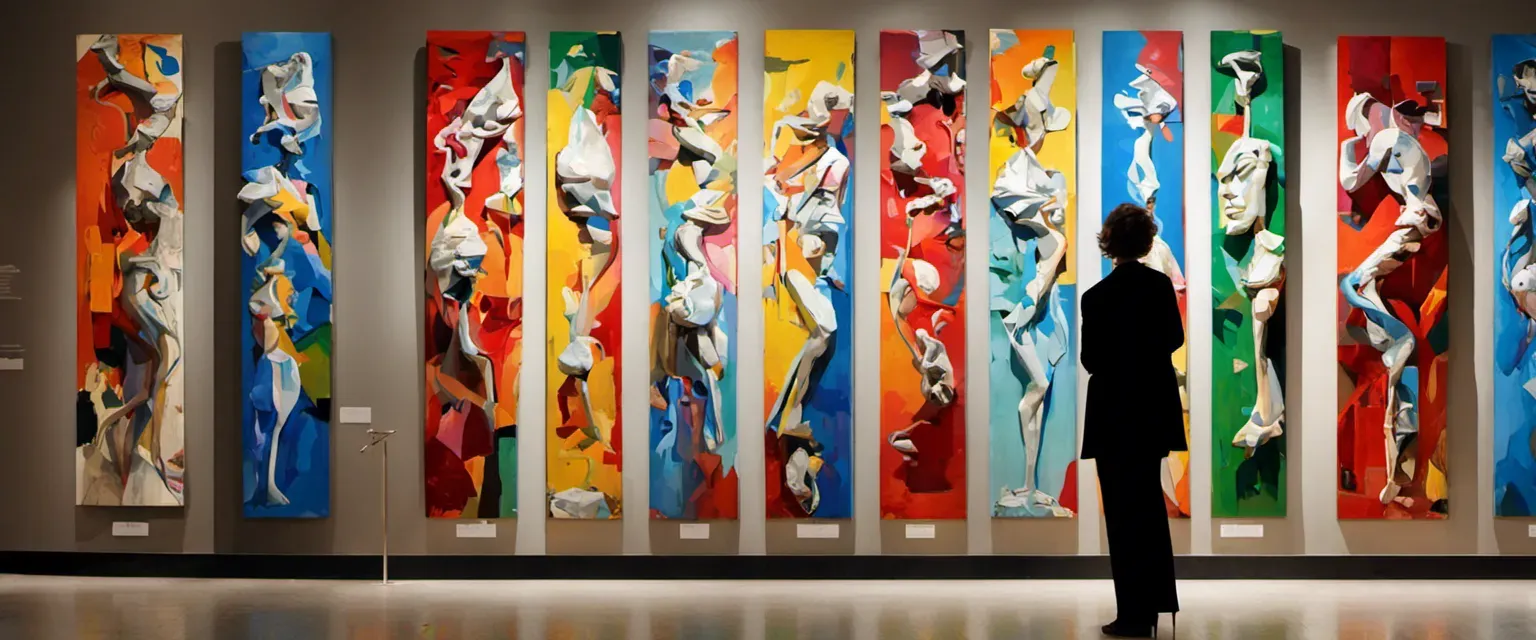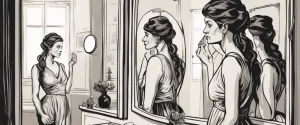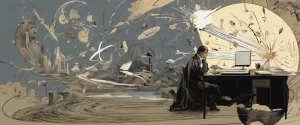——The Agony and the Ecstasy by Irving Stone & Memories, Dreams, Reflections by C.G. Jung
In the vast literary landscape, few subjects captivate the human mind as powerfully as the exploration of personal growth, the art of self-discovery, and the interplay between pain and pleasure. Two remarkable works, “The Agony and the Ecstasy” by Irving Stone and “Memories, Dreams, Reflections” by C.G. Jung, delve deep into these profound themes, illuminating the unique journeys undertaken by individuals embarking on the path of self-realization. As their titles imply, both books offer distinct perspectives on the human condition, drawing upon the realms of art and psychology to unravel the intricate tapestry of the human psyche. Although stemming from different genres and written by authors who lived in distinct eras, the masterpieces by Stone and Jung converge in their exploration of the dualities inherent in the human experience. Through the lens of Michelangelo’s remarkable life and the introspective reflections of Jung himself, these works invite us to investigate the indomitable spirit’s pursuit of ecstasy amidst the tumultuous waves of agony. As we embark on this comparative study, we shall uncover the similarities and disparities between these texts, ultimately unraveling the timeless quest for profound understanding and self-realization.
Brief Summary of Two Books
The Agony and the Ecstasy by Irving Stone
The Agony and the Ecstasy” by Irving Stone is a fictionalized biography of the Italian Renaissance artist, Michelangelo Buonarroti. The book follows Michelangelo’s life from his early years as an apprentice in Florence, where he explores his passion for sculpting, to his time in Rome where he creates some of his most renowned works.
The story delves into Michelangelo’s struggles as he battles against the confines of his strict upbringing and a society that does not fully appreciate his artistic genius. He faces numerous challenges and setbacks throughout his career, including conflicts with patrons, rival artists, and the demanding expectations of the Catholic Church.
The book also explores Michelangelo’s complex relationships, particularly with his father and his close friend, the poet Vittoria Colonna. While the artist experiences great professional successes, he is haunted by self-doubt and an ongoing battle with his inner demons.
Through Stone’s vivid descriptions and meticulous research, readers gain a thorough understanding of the artistic process and the immense dedication Michelangelo poured into his work. From his iconic sculptures including David and the Pieta, to his frescoes on the Sistine Chapel ceiling, the book showcases the intricate details and sacrifices involved in bringing these masterpieces to life.
Overall, “The Agony and the Ecstasy” presents a captivating and emotional account of Michelangelo’s life, highlighting the struggles and triumphs of one of history’s greatest artists.
Memories, Dreams, Reflections by C.G. Jung
“Memories, Dreams, Reflections” is an autobiographical work by C.G. Jung, a renowned Swiss psychiatrist and psychoanalyst. The book chronicles Jung’s personal and professional life, providing a deeper understanding of his journey towards self-discovery and the development of his pioneering theories.
The narrative begins with Jung’s early childhood experiences and explores the profound impact of his visions and dreams, which later influenced his work on analytical psychology. He reflects on significant events and relationships, including his encounters with Sigmund Freud and the subsequent ideological differences that led to their separation.
Jung’s exploration of his inner world and the collective unconscious forms a central theme. He delves into his experiences of exploring myths, symbols, and archetypes, and their role in the formation of human psyche. With his travels to various cultures, studying indigenous traditions and religions, Jung embraces the concept of individuation— the journey towards wholeness and integration of both the conscious and unconscious aspects of the self.
The book also reveals Jung’s struggles with his own psyche, including his psychological crisis, known as his “confrontation with the unconscious.” This period of self-discovery served as a transformative experience, leading him to further explore the depths of the unconscious mind and develop therapeutic techniques, such as active imagination and dream analysis.
“Memories, Dreams, Reflections” offers readers a profound insight into Jung’s personal experiences, intellectual pursuits, and his influential contributions to the field of psychology and psychoanalysis. It presents a holistic view of his life, capturing his ongoing exploration of the mysteries of human existence and the rich tapestry of the human psyche.
Comparison between Two Books
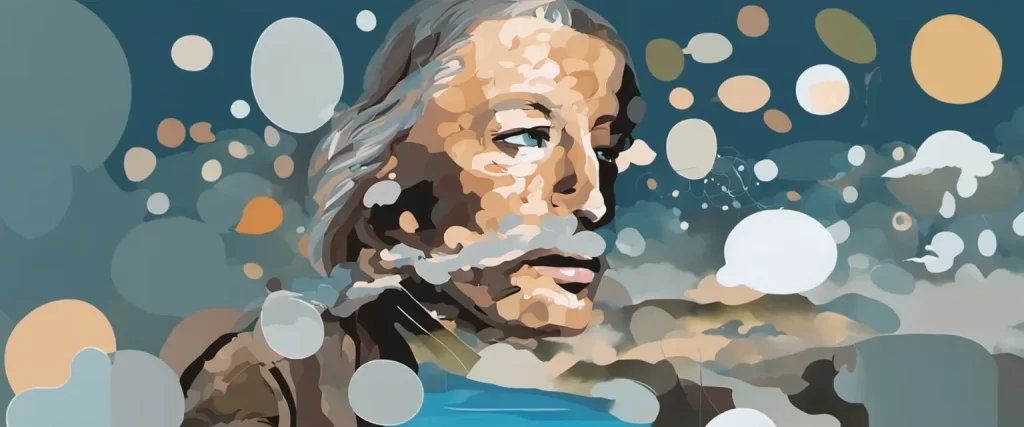
Similarities in Historical Figures
In parallel to each other, “The Agony and the Ecstasy” by Irving Stone and “Memories, Dreams, Reflections” by C.G. Jung delve into the lives of historical figures, seeking to understand their inner struggles, their passions, and the impact they had on the world. Despite depicting two distinct personalities, Michelangelo Buonarroti and Carl Jung, respectively, the two books share several similarities in their treatment of these historical figures.
1. In-depth exploration: Both books provide a comprehensive exploration of the lives and minds of their subjects. Stone and Jung meticulously research the historical context of Michelangelo and Jung and portray their characters through detailed narratives. They include various aspects of their subjects’ lives, including personal relationships, achievements, and struggles.
2. Psychological depth: Both books delve into the psychological complexities of their central figures. Stone and Jung explore the inner workings of Michelangelo and Jung’s minds, revealing their hopes, fears, and dreams. They examine the psychological motivations behind their subjects’ actions and creations, presenting a multidimensional portrayal of their characters.
3. Artistic pursuits: A significant similarity between the two figures is their pursuit of artistic expression. Michelangelo, known for his exceptional skill in sculpting and painting, is depicted in “The Agony and the Ecstasy” creating profound works of art. Similarly, Jung, in “Memories, Dreams, Reflections,” recounts his experiences with artistic forms such as painting and writing, exploring how these outlets allowed him to express his inner realities.
4. Spiritual and philosophical exploration: Both Michelangelo and Jung contemplate profound questions and engage in spiritual and philosophical journeys. In “The Agony and the Ecstasy,” Michelangelo grapples with existential dilemmas and explores the relationship between art, religion, and human nature. Similarly, Jung, in “Memories, Dreams, Reflections,” reflects on his experiences with mysticism, his theories of the collective unconscious, and his dialogues with the unconscious mind.
5. Legacy and impact: Both Michelangelo and Jung left an enduring impact on their respective fields and the world at large. “The Agony and the Ecstasy” and “Memories, Dreams, Reflections” explore the influence Michelangelo and Jung had during their lifetimes and the enduring legacy they left behind. Both figures challenged conventional thinking and pushed the boundaries of their disciplines, leaving an indelible mark on art and psychology, respectively.
In summary, “The Agony and the Ecstasy” and “Memories, Dreams, Reflections” share striking similarities in their portrayal of historical figures. Both books provide an in-depth exploration of their subjects, delve into their psychological depths, highlight their artistic pursuits, explore their spiritual and philosophical journeys, and examine their enduring legacies. Through these parallel narratives, readers are offered a deep understanding and appreciation of the complexities of these historical figures and the impact they had on the world.
Divergences in Historical Figures
Both “The Agony and the Ecstasy” by Irving Stone and “Memories, Dreams, Reflections” by C.G. Jung are biographical works that delve into the lives and experiences of significant historical figures. While “The Agony and the Ecstasy” focuses on the life of Italian artist Michelangelo, “Memories, Dreams, Reflections” explores the personal journey and psychological insights of Swiss psychiatrist Carl Gustav Jung.
One primary divergence between these two books is the subject matter and the careers of the individuals being portrayed. Michelangelo, the central figure in “The Agony and the Ecstasy,” is renowned for his contributions to the world of art and sculpture during the Italian Renaissance. Stone’s novel chronicles Michelangelo’s life, artistic struggles, and his relationships with various influential figures of his time, all set against the backdrop of Italy’s artistic renaissance. The emphasis is on his artistic endeavors and the challenges he faced as he strived to create masterpieces.
On the other hand, “Memories, Dreams, Reflections” is an autobiographical work by C.G. Jung, a famous psychiatrist and founder of analytical psychology. Jung’s book recounts his personal experiences, introspections, dreams, and reflections on his own psychoanalytic theories. Unlike Stone’s book, which focuses on the external achievements of Michelangelo, Jung’s work primarily delves into the internal world of the mind, exploring the depths of human psychology and spirituality.
Another key difference can be seen in the narrative approach and style used by the authors. Stone’s “The Agony and the Ecstasy” is a historical fiction novel that blends real events and characters with fictionalized dialogue and scenes. Stone meticulously researched Michelangelo’s life and the historical context, but he also took creative liberties in crafting the narrative. On the other hand, “Memories, Dreams, Reflections” is a memoir written directly by Jung, offering readers a more authentic and introspective account of the author’s thoughts, dreams, and memories.
Additionally, the scope and focus of the two books differ. “The Agony and the Ecstasy” provides a comprehensive exploration of Michelangelo’s life from his early days as an apprentice in Florence to his work for popes in Rome. It covers a significant portion of Michelangelo’s life and highlights his transformation as an artist. Conversely, “Memories, Dreams, Reflections” offers a more fragmented and introspective narrative as Jung explores his inner world, discussing his experiences and analyzing dreams and visions.
In conclusion, while both “The Agony and the Ecstasy” by Irving Stone and “Memories, Dreams, Reflections” by C.G. Jung are biographical works, they diverge significantly in terms of their subject matter, perspective, and narrative approach. Stone’s focus is on the external achievements of Michelangelo as an artist, while Jung’s work explores the internal world of psychology and spirituality, offering readers an in-depth look into his personal experiences and reflections.
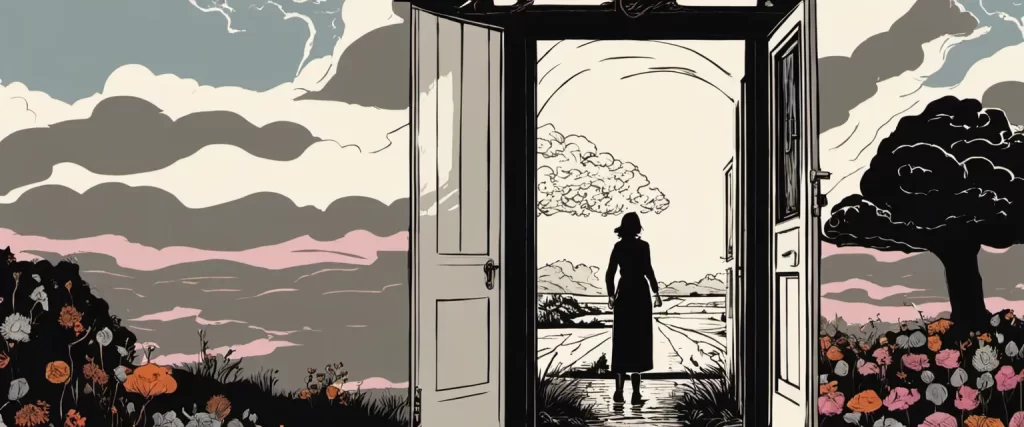
Conclusion
Both The Agony and the Ecstasy by Irving Stone and Memories, Dreams, Reflections by C.G. Jung are highly regarded works in their respective fields. However, determining which book is more worthy of reading ultimately depends on individual preferences and interests.
The Agony and the Ecstasy is a historical biographical novel that delves into the life of the renowned Italian artist, Michelangelo. Stone meticulously researches and recreates the artist’s struggles, triumphs, and artistic process, providing rich historical and cultural context. This book is an excellent choice for those interested in art history, Renaissance Italy, or the life of Michelangelo.
On the other hand, Memories, Dreams, Reflections is an autobiography of Carl Jung, one of the most influential psychologists of the 20th century. This work offers deep insights into Jung’s personal life, his spiritual experiences, and his development of analytical psychology. Memories, Dreams, Reflections is more suitable for readers fascinated by psychology, philosophy, spirituality, and self-reflection.
Considering the subject matter and your personal interests, you should determine which book aligns more with your preferences. Both texts are highly acclaimed and offer unique perspectives and knowledge.
